12 Different Types of Food Around The World
Have you ever contemplated the exciting world of different types of cuisines? In a universe filled with countless wonders, food reigns as the ultimate boundary-breaker. From the elegance of Indian cuisine to the spicy flavors of Korean dishes, each culinary tradition tells a unique story.
Discover 12 delectable types of food and distinct cuisines here that have captivated the hearts and taste buds of many people.
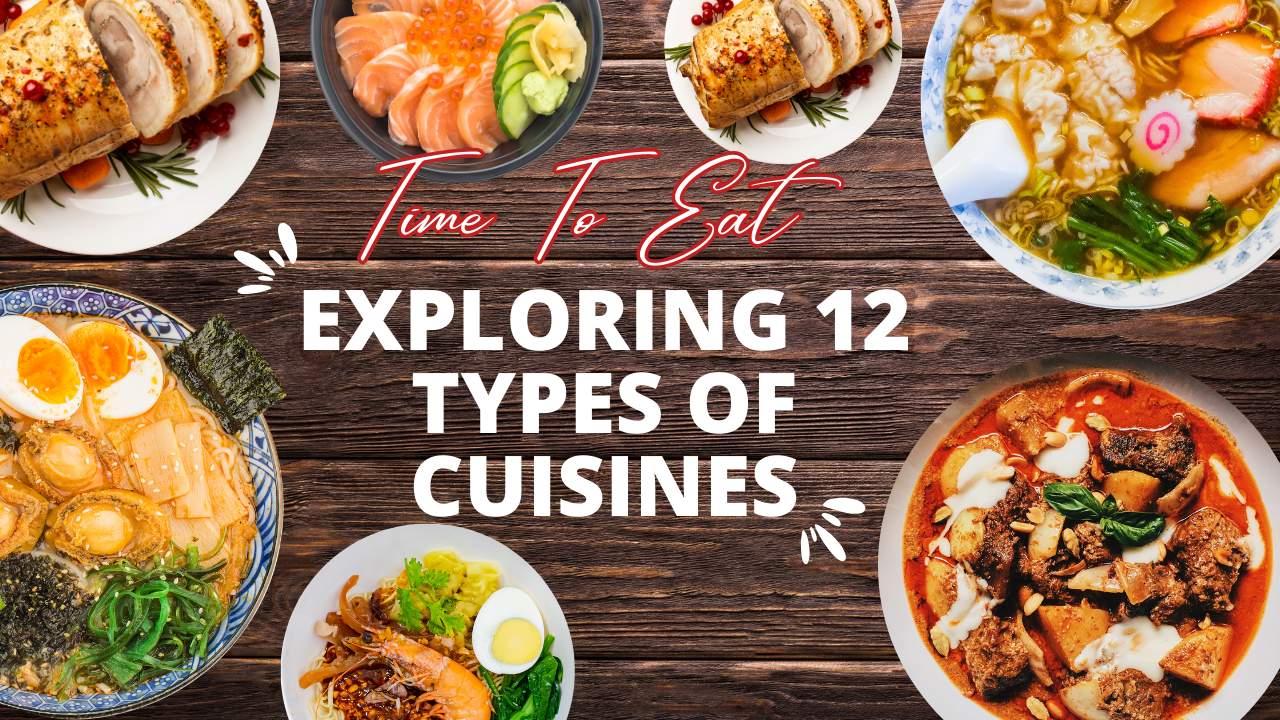
Types of Cuisines
From the fiery and bold flavors of Asia to the refined artistry of French cuisine and the hearty barbecues of North America, food exudes its unique character.
No one ought to suffer from hunger, and for those who have not yet embarked on the exciting culinary show of exploring diverse cuisines, it’s an open invitation to savor the delightful types of cuisines.
Chinese Cuisine: The Art of Balance
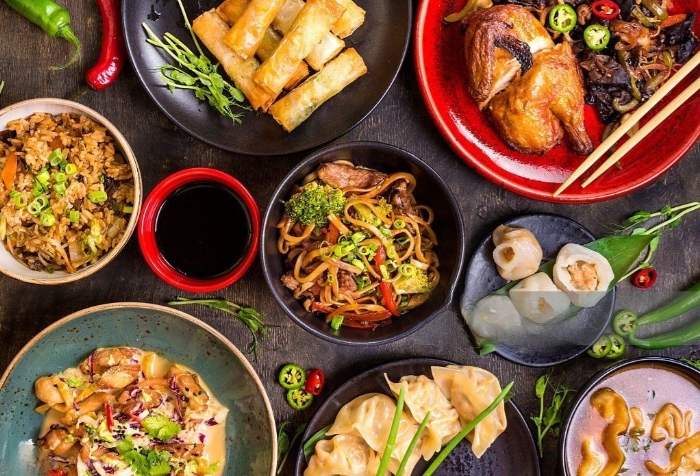
Chinese cuisine is a reflection of the country’s diverse culture and vast geography. It’s a harmonious blend of flavors, textures, and colors. Chinese chefs understand the art of balance, and this is evident in every dish they create.
Chinese cuisine offers a wide spectrum of tastes, from fiery Sichuan dishes to exquisite dim sum. Ingredients like ginger, garlic, soy sauce, and rice vinegar play pivotal roles in Chinese cooking.
The Chinese philosophy of yin and yang, which emphasizes balance and harmony, is deeply ingrained in their culinary traditions.
Whether you’re savoring a plate of Peking duck or enjoying a simmering pot of noodles, you’re experiencing the exquisite equilibrium that defines Chinese cuisine. You can also explore delicious Chinese restaurants here that every foodie should visit.
Indian Cuisine: A Spicy Extravaganza
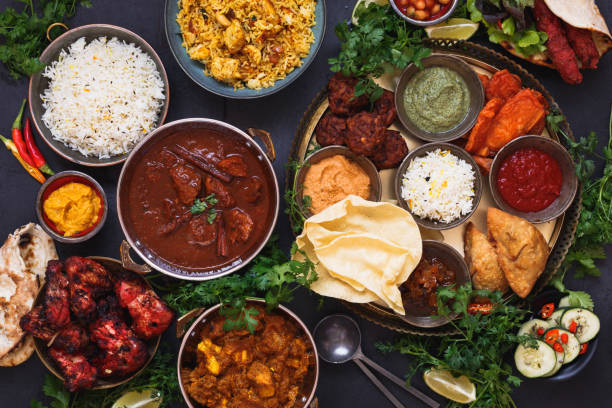
Indian food or cuisine is a kaleidoscope of flavors and spices. It’s a cuisine that takes you on a rollercoaster ride of taste sensations, from the fiery curries of the south to the aromatic biryanis of the north.
The use of spices is the heart of Indian cooking. Cumin, coriander, turmeric, and chili peppers infuse dishes with vibrant colors and bold flavors. Each region of India has its own spice blends and signature dishes.
In the south, you’ll find dishes like dosa and sambar, which are crispy and spicy. In the north, creamy curries like butter chicken and rich gravies like Rogan Josh reign supreme.
Indian cuisine is a treasure trove of culinary diversity and complexity making it one of the best types of cuisines. If you are currently living in Jeddah and want to explore Indian cuisine then here are 5 Must-try Indian restaurants which will blow your taste buds.
Japanese Cuisine: Simplicity Perfected
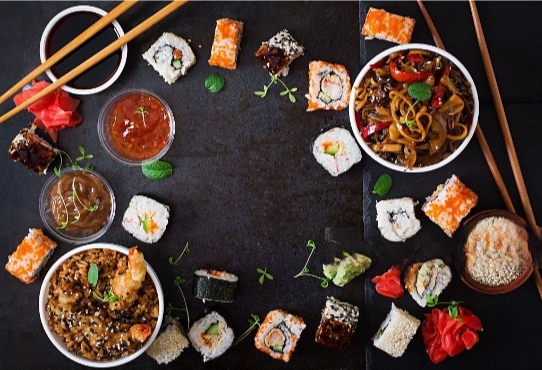
Japanese cuisine is a testament to the beauty of simplicity and precision. It’s a cuisine that places a premium on the quality of ingredients and the skill of the chef. Sushi, sashimi, and tempura are just a few examples of how the Japanese elevate raw ingredients to culinary art. You can visit a japanese food store online to purchase authentic meal kits, dressings and sauces so you can experience Japanese cuisine without the travel.
Sushi, in particular, is a global sensation. It involves a delicate dance of flavors, textures, and presentation. The rice must be perfectly seasoned, the fish impeccably fresh, and the assembly precise. It’s a dish that embodies the Japanese pursuit of perfection.
Japanese cuisine also places great importance on aesthetics. Traditional kaiseki meals are a visual delight, with each course thoughtfully designed to please the eyes as well as the palate. It’s a cuisine that celebrates purity of taste and the elegance of simplicity.
French Cuisine: A Symphony of Flavors

French food or cuisine is often regarded as the pinnacle of culinary artistry. It’s a symphony of flavors and techniques that have shaped the culinary world. The French are known for their meticulous attention to detail and the use of high-quality, locally sourced ingredients.
From the buttery croissants that melt in your mouth to the exquisite coq au vin, French food is all about indulgence. Each region in France has its specialties, from the seafood-rich dishes of Normandy to the hearty stews of Provence.
French cuisine has given us culinary terms like “sauté,” “bouillabaisse,” and “crème brûlée,” which have become global culinary lexicons. It’s a cuisine that celebrates both simplicity and complexity, making it a delight for food connoisseurs worldwide.
Spanish Cuisine: A Fiesta on Your Plate

Spanish Food is synonymous with celebration and sociability. Spaniards love to share food with friends and family, and their dishes are meant to be savored slowly.
Paella, the iconic Spanish dish, is a vibrant mix of saffron-infused rice, seafood, and vegetables. Tapas, small plates of various appetizers, invite diners to explore a wide range of flavors in a single meal. Spanish food is rich and hearty, often accompanied by a glass of Rioja wine.
Spanish cuisine is influenced by the country’s diverse regions. From the seafood-rich dishes of Galicia to the hearty stews of Castilla, each area has its culinary specialties. Spanish cuisine is a fiesta of flavors, and every meal feels like a celebration.
Italian Cuisine: The Art of Comfort
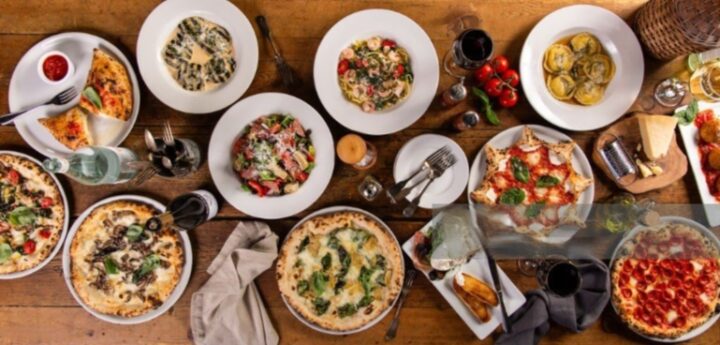
Italian cuisine is all about comfort and simplicity. It’s a cuisine that values the quality of ingredients above all else. Who can resist a bowl of al dente pasta tossed in a rich tomato sauce or a wood-fired pizza with a thin, crispy crust?
Italian food has a deep tradition. Recipes are often passed down through generations, and the focus is on using fresh, seasonal produce. Olive oil, garlic, and basil are staples in Italian kitchens, lending their flavors to countless dishes.
One of Italy’s culinary gifts to the world is pasta. With hundreds of shapes and varieties, pasta is a versatile canvas for a wide range of sauces and ingredients. Whether you’re savoring a plate of spaghetti carbonara or a slice of margarita pizza, Italian food is universally loved for its simplicity and warmth.
Korean Cuisines: Intensely flavored
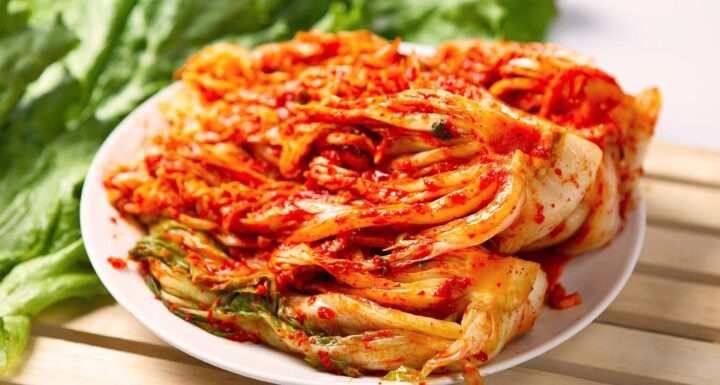
Korean cuisine is a captivating tapestry of culinary artistry that draws from centuries of tradition and flavor innovation. Kichi is the iconic dish at the heart of Korean cuisine.
Kimchi is made from vegetables, typically Napa cabbage or radishes. Its spicy, tangy, and slightly sweet profile adds a burst of flavor to any meal.
Bulgogi, another Korean favorite, showcases the mastery of marinating and grilling. Grilled strips of beef or pork are marinated in soy sauce, sugar, garlic, and sesame oil. The result is tender, flavorful meat that is often wrapped in lettuce leaves and enjoyed with a variety of condiments.
Bibimbap, a beloved Korean comfort food, offers a delightful medley of flavors and textures. It combines rice with an assortment of sautéed and seasoned vegetables, often topped with a fried egg and served with gochujang, a spicy red pepper paste.
Mixing all the elements together creates a harmonious symphony of taste. Communal dining is a hallmark of Korean cuisine, fostering a sense of togetherness and celebration among friends and family.
Lebanese Cuisine: Middle Eastern Elegance

Lebanese food is a shining example of Middle Eastern elegance, making it one of the finest types of cuisines. It’s a cuisine that’s all about balance, with flavors that are both delicate and robust. Ingredients like tahini, pomegranate, and sumac are the stars of Lebanese dishes.
Hummus, a creamy blend of chickpeas, tahini, and lemon juice, is a global favorite. Falafel, deep-fried balls of ground chickpeas or fava beans, are a beloved street food. Shawarma, thinly sliced marinated meat, is a culinary delight when wrapped in warm pita bread.
Lebanese cuisine places a strong emphasis on fresh herbs, like mint and parsley, which add brightness to dishes. It’s a cuisine that’s as beautiful as it is delicious, with flavors that transport you to the bustling streets of Beirut.
Greek Cuisine: Mediterranean Delights
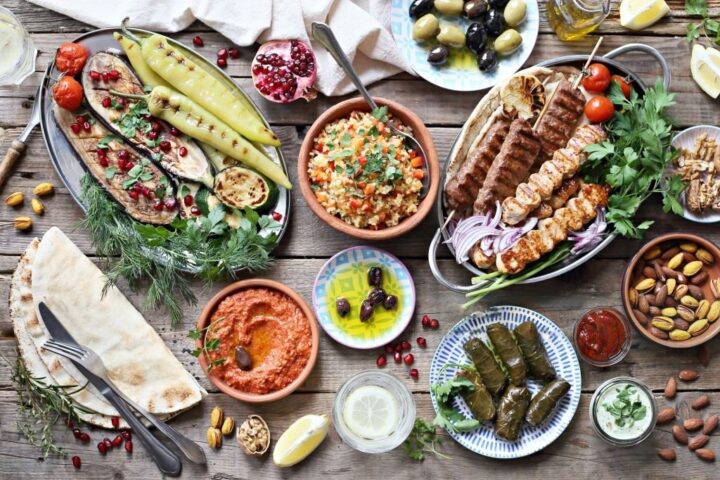
Greek cuisine is a celebration of Mediterranean ingredients and flavors. Olive oil, feta cheese, and fresh vegetables take center stage in many Greek dishes. The Mediterranean diet, with its emphasis on wholesome ingredients, is a cornerstone of Greek cooking.
Moussaka, a layered dish of eggplant, minced meat, and béchamel sauce, is a Greek classic. Souvlaki, skewered and barbecued ists, is another beloved street food. Greek cuisine is known for its mezze, a selection of small, shareable dishes that range from stuffed grape leaves to creamy tzatziki.
The flavors of Greece are bright and vibrant, reflecting the country’s sunny climate and coastal lifestyle. It’s a cuisine that embodies the joy of simple, fresh ingredients prepared with love. By the way, if you are looking for an ultimate guide to a foodie’s trip to Michigan then read it here.
Thai Cuisine: A Burst of Flavors
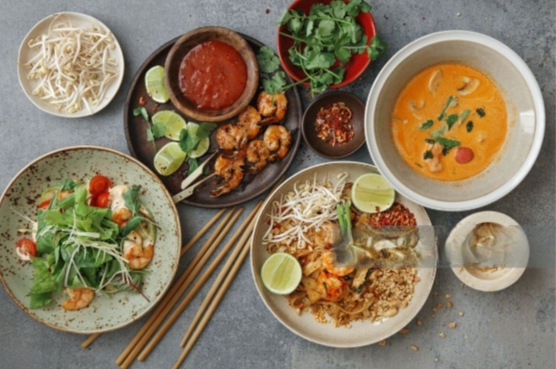
Thai Food is a burst of sweet, sour, spicy, and salty flavors. It’s a cuisine that’s notorious for its complexity and freshness, with each dish offering a harmonious blend of tastes and textures.
Pad Thai, a stir-fried noodle dish, is a global favorite. Green curry, made with a fragrant blend of green chilies, lemongrass, and coconut milk, is a culinary masterpiece. Tom Yum soup, a spicy and sour broth filled with shrimp or chicken, is a Thai classic.
Thai cuisine celebrates the use of fresh herbs like basil, cilantro, and mint, which infuse dishes with vibrant aromas. The balance of flavors in Thai cooking is a delicate art, with chefs carefully considering the interplay of sweet, sour, salty, and spicy elements.
Moroccan Cuisine: A Blend of Exotic Spices
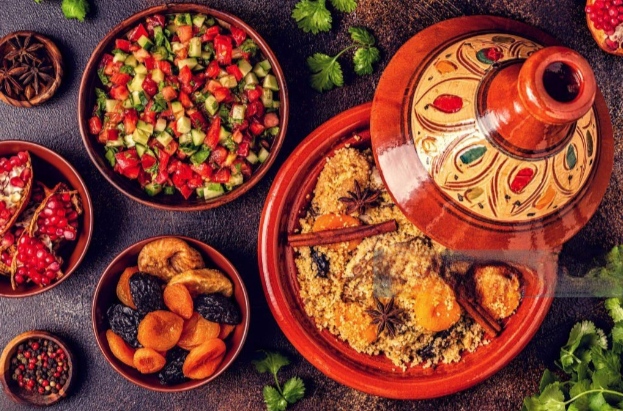
Moroccan cuisine is a fragrant journey through North Africa. It’s a cuisine that delights the senses with its exotic spices and rich, aromatic flavors. The use of spices like cumin, cinnamon, and coriander defines Moroccan cooking.
Tagine, a slow-cooked stew named after the earthenware pot it’s cooked in, is a Moroccan staple. Couscous, tiny steamed gserve serves as the perfect accompaniment to flavorful tagines. Moroccan cuisine often combines sweet and savory flavors, with dishes like lamb tagine with prunes and almonds.
Mint tea, served sweet and hot, is a Moroccan tradition and a symbol of hospitality. Moroccan cuisine reflects the country’s diverse cultural influences, including Berber, Arab, and Mediterranean, resulting in a rich tapestry of flavors.
Turkish Cuisine: The Crossroads of Flavor

Turkish food sits at the crossroads of Europe and Asia, and its food is a reflection of this unique position. It’s a cuisine that’s both hearty and refined, with an emphasis on fresh ingredients and bold flavors.
Kebabs, grilled skewers of meat or vegetables, are a Turkish specialty. Baklava, a sweet pastry made of layers of phyllo dough, nuts, and honey, is a beloved dessert. Turkish delight, or lokum, is a chewy, sweet treat infused with flavors like rosewater and pistachio.
One hallmark of Turkish cuisine is its use of spices and herbs like sumac, red pepper flakes, and mint.
The blending of sweet and savory flavors is a common theme in Turkish dishes, creating a delightful culinary experience. No doubt it comes under one of the mouth-watering types of food.
As we are exploring different cuisines, here are 10 foods that are bad for your health. Excess of everything is bad so keep relaxing your taste buds with your favorite food but keep a balanced diet.
Conclusion
Food is a universal language that transcends borders, and these 12 types of food and cuisines from around the world offer a glimpse into the rich tapestry of global culinary traditions.
Whether you’re savoring French delicacies, indulging in Indian spices, or enjoying the simplicity of Japanese dishes, there’s a world of flavors you can explore.
So, next time you sit down to a meal, remember that you’re not just eating; you’re experiencing a culture’s history and traditions through its types of cuisines.
People Also Ask:
French cuisine is popular for its emphasis on fresh ingredients, intricate techniques, and a focus on creating harmonious flavor profiles. It’s all about balance and elegance on the plate.
While Indian cuisine is famous for its spices, not all dishes are overly spicy. There are plenty of mild and flavorful options to explore, catering to various taste preferences.
Some must-try dishes in Thai cuisine include pad Thai, green curry, Tom Yum soup, and mango sticky rice for dessert. These dishes showcase the diverse flavors of Thai food.
While Greek cuisine is part of Mediterranean cuisine, they have distinct characteristics. Greek cuisine often features ingredients like feta cheese and olives prominently, giving it a unique identity within the Mediterranean culinary landscape.
The secret to perfect sushi lies in using high-quality, fresh ingredients and mastering the art of sushi rice preparation. Precision and attention to detail are essential for creating exquisite sushi.


